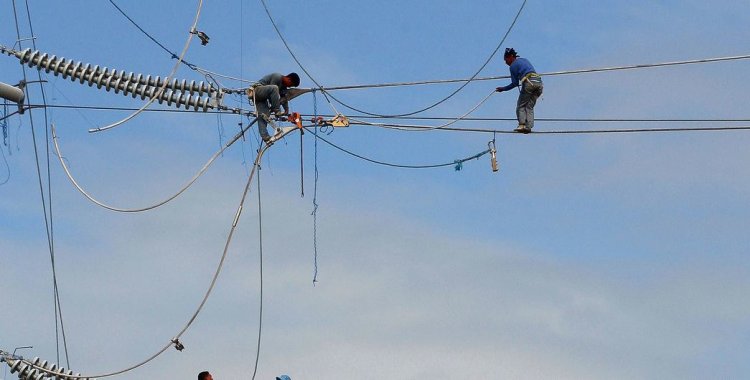For several decades, we have been fully aware that finite resources, namely oil, coal and natural gas, are not eternal, and their unrestrained burning irremediably pollutes our atmosphere. The risk of permanent and irreversible climate change has been widely discussed for more than 20 years since the Kyoto Protocol in 1997. However, to this day, we still depend on fossil fuels for more than 85% of our energy supply. If we can get this energy transition right, we can usher in a new era of human prosperity and offer future generations the gift of affordable, sustainable clean energy that will never run out.
In more accessible language, the energy transition, although it seems like a modern and fashionable concept, is not a new idea. After all, whenever a society exchanges its main source of energy for another, it is experiencing an energy transition. The transition from coal to oil and subsequently to more environmentally friendly energy sources is notable in this context. The UK's decision to adopt diesel fuel to replace coal before the First World War is a striking example of the significant impacts that energy choices can have. Therefore, the energy transition represents the change in sources
of energy from the previously mentioned fossil fuels to clean and renewable energy sources, such as solar, wind, biofuels, green hydrogen, hydroelectric plants, among others.
This is a topic of deep interest to the scientific community and, indeed, to the global community, as we face challenges arising from climate change, the effects of which are already noticeable on a global scale. As highlighted in the AR6 Synthesis Report of the Intergovernmental Panel on Climate Change (IPCC, 2023), climate change involves long-term changes in climate parameters and temperature patterns. Although some climate changes are natural, such as variations in the solar cycle, since the 19th century, human activities have played a predominant role in generating
climate disruptions, mainly due to industrialization and the burning of fossil resources such as coal, oil and gas, which result in the emission of greenhouse gases and increased temperatures.
Therefore, we have several reasons not to postpone our actions in this regard. The data indicates that industrialization, which requires enormous amounts of energy, is primarily responsible for these climate changes. If we do not take action in time to limit global warming to 1.5°C, the consequences could be catastrophic. The International Energy Agency (IEA), together with the United Nations (UN), warns that climate change could intensify extreme weather events such as hurricanes, droughts, floods and wildfires, causing significant damage to infrastructure, agriculture and human life. , especially on our continent.
Therefore, given this scenario and the understanding that a large part of the solution to mitigate these impacts involves a fundamental transformation in our energy matrix, which requires detailed commitments, financial support and immediate action, it is up to all of us, as society, academia, scientists , opinion leaders, public policy makers, businesspeople and professionals, evaluate how we can contribute to reducing these impacts. Assessing our potential and the actions we can take in terms of energy generation is a fundamental step towards sustainability and to the energy transition. Thus, in a literature review in which I examined the potential for generating renewable energy in our national territory, I was able to verify the following:
- Hydroelectric energy potential: As highlighted by the Ministry of Energy and Water (MINEA) in 2016, Angola has considerable hydroelectric potential, a result of the extensive river network that crosses its territory. Dombaxe (2011) also highlights that of the 47 existing river basins in Angola, 6 are considered the largest due to their inflow area, with a total of 933,225km 2, which correspond to 75% of the country's surface, forming an exceptional water potential” . Water resources in Angola are estimated at around 18 gigawatts (GW), which, in turn, could enable the production of approximately 72 terawatt-hours (TWh) of electricity.
- Wind Energy Potential: According to the Atlas and National Strategy for New Renewable Energy, analyzes conducted in areas with feasibility of integration into the electrical grid revealed an estimated potential of 3.9 gigawatts (GW). In other words, winds above 4m/s are favorable throughout practically the entire national territory.
- Solar Energy Potential: The Angolan territory has a significant potential for harnessing solar energy, characterized by an average annual global horizontal radiation ranging between 1,350 and 2,070 kilowatt-hours per square meter (kWh/m²/year). In this context, solar energy emerges as the broadest and most uniformly distributed renewable source throughout the country. According to the Angolan Renewable Energy Atlas and Strategy, areas were identified with attributes suitable for the implementation of medium and large-scale photovoltaic projects, capable of being integrated into the electrical grid, with potential capacity for the installation of more than 17.3 gigawatts (GW) of capacity (MINEA, 2015; GONÇALVEZ, 2019).
- Biomass energy potential: 42 suitable locations for the installation of biomass projects were identified, with an estimated capacity of 3.7 gigawatts. Angola is very rich in soybeans, sugar cane and solid biomass such as wood, agricultural residues, nut shells and other cellulosic materials. With this potential, it is possible to generate energy through biofuels, biodiesel, biogas, ethanol, urban solid waste, etc.
Given all this potential, including that which still awaits more in-depth studies, the question arises about how to accelerate our trajectory in the global energy transition. However, it is essential to establish, before any proposal, that there is no universal solution to the energy transition. Each nation presents its particularities, geopolitical and economic issues that must be carefully considered in this context. Possibly, this transition could be carried out through an energy mix, in which different energy resources are harmonized, contributing to diversifying the internal energy supply of a country, including, in this case, Angola. In general, they can be:
- Promote the Use of Biofuels: Invest in biofuel production technologies from local crops, such as sugar cane and castor beans. Encourage the incorporation of biofuels into the energy matrix for electricity generation and transport.
- Develop Solar and Wind Energy: Explore the vast potential of solar and wind energy in Angola, mainly in regions of high solar irradiation and constant winds. Invest in solar and wind farm projects to diversify electricity generation.
- Improve Energy Efficiency: Implement energy efficiency programs to reduce energy waste in sectors such as industry, transport and buildings. This may include introducing regulations on
- energy efficiency and the promotion of sustainable practices.
- Expand Rural Electrification: Bring electricity to rural areas currently not served by electrical grids, through decentralized solutions such as microgrids and mini and microgrid solar energy systems.
- Modernize Energy Infrastructure: Invest in modernizing energy infrastructure, including expanding and improving electrical distribution and transmission networks to ensure a reliable supply.
- Establish International Partnerships: Collaborate with international organizations and bilateral partners to access financing and technology, as well as to exchange experiences in the field of energy transition.
- Empower the Workforce: Invest in the training and training of local professionals in renewable energy technologies and energy efficiency, creating a qualified workforce to drive the energy transition.
- Favorable Policies and Regulations: Develop and implement policies and regulations that encourage the production, distribution and consumption of clean and renewable energy. This may include renewable energy targets and energy efficiency standards.
- Public Awareness: Promote public awareness about the importance of the energy transition, encouraging responsible energy consumption practices and active participation in the adoption of cleaner energy sources.
Conclusion
That said, Angola has excellent resources to stay ahead, towards the energy transition race and consequent expansion of its energy matrix. But as mentioned, there is no single solution for this transition to occur. Therefore, accelerating the energy transition in Angola requires a holistic approach, which includes investments in infrastructure, favorable regulations, education and public awareness. With the appropriate commitment and effective implementation of these strategies, Angola can move towards a more sustainable energy matrix, contributing to the reduction of carbon emissions and the achievement of the Sustainable Development Goals.
Furthermore, it is important to remember that energy independence is not just a matter of energy production and consumption, but also a matter of economic and social development. The transition to a more diversified and sustainable economy can lead to an improvement in the population's quality of life and a brighter future for Angola.
References
http://www.mme.gov.br/eficiencia-energetica.
AIE. Available at: https://www.iea.org/topics/global-energy-transitions-stocktake
UN. Causes and Effects of Climate Change. Available at: https://www.un.org/pt/climatechange/science/causes-effects-climate-change. Accessed on: [10/10/2023].
IPCC, 2023. Available at: https://www.ipcc.ch/report/sixth-assessment-report-cycle/








